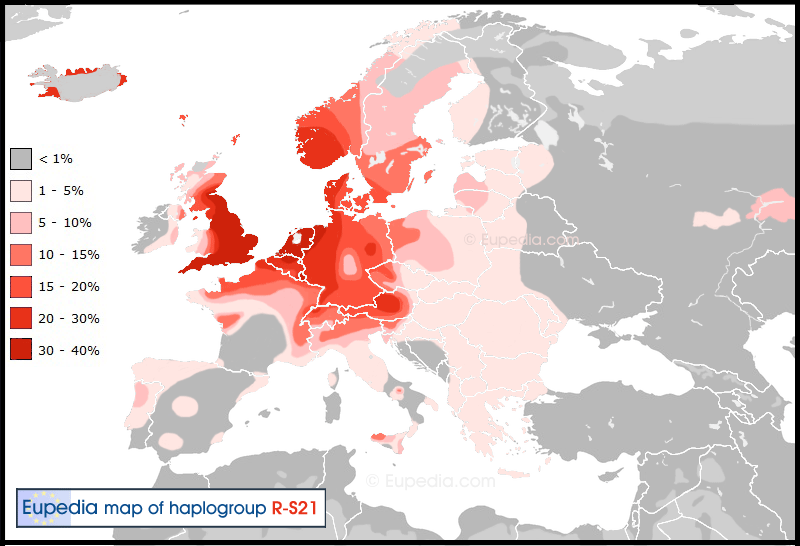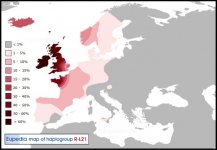Since we are discussing England, I thought I would post here what I could find for England from the Busby et al paper's supplementary info Excel chart.
http://rspb.royalsocietypublishing....8/18/rspb.2011.1044.DC1/rspb20111044supp2.xls
The six sample locations in England were: 1) Southwell, Nottinghamshire; 2) Lutterworth, Leicestershire; 3) Leeds, West Yorkshire; 4) Peterborough, Cambridgeshire; 5) Exeter, Devon; and 6) Gravesend, Kent.
I mentioned this elsewhere once before, but I noticed that the
M1 Motorway, which runs north-south through basically the center of England, makes it fairly easy to see that Busby's sampling is skewed a bit to the eastern side of England. Leeds and Lutterworth are pretty much right on the M1. Southwell, Peterborough, and Gravesend are east of it, Gravesend well east of it, down in SE England. As I said before, there was only
one sample location in the West, the one at Exeter in Devon.
Here is a breakdown by sampling location in England.
Southwell N= 165
U106xU198 = 15.8%
U198 = 2.4%
P312xL21,U152 = 15.2%
L21xM222 = 16.4%
M222 = 0
U152 = 9.7%
Lutterworth N=25
U106xU198 = 24%
U198 = 0
P312xL21,U152 = 12%
L21xM222 = 8%
M222 = 4%
U152 = 0
Leeds N=47
U106xU198 = 14.9%
U198 = 6.4%
P312xL21,U152 = 10.6%
L21xM222 = 29.8%
M222 = 10.6%
U152 = 6.4%
Peterborough N= 172
U106xU198 = 23.3%
U198 = 2.3%
P312xL21,U152 = 17.4%
L21xM222 = 12.8%
M222 = 0
U152 = 8.1%
Exeter N=48
U106xU198 = 25%
U198 = 0
P312xL21,U152 = 6.3%
L21xM222 = 37.5%
M222 = 0
U152 = 8.3%
Gravesend N=52
U106xU198 = 23.1%
U198 = 3.8%
P312xL21,U152 = 21.2%
L21xM222 = 13.5%
M222 = 1.9%
U152 = 15.4%
Averaging over all six sample locations, I arrive at the following:
U106xU198 = 21%
U198 = 2.48%
P312xL21,U152 = 13.78%
L21xM222 = 19.66%
M222 = 2.75%
U152 = 7.98%
Busby's sample has an eastern bias, which translates into an Anglo-Saxon and U106 bias. A few more locations in the west would have balanced things out.



